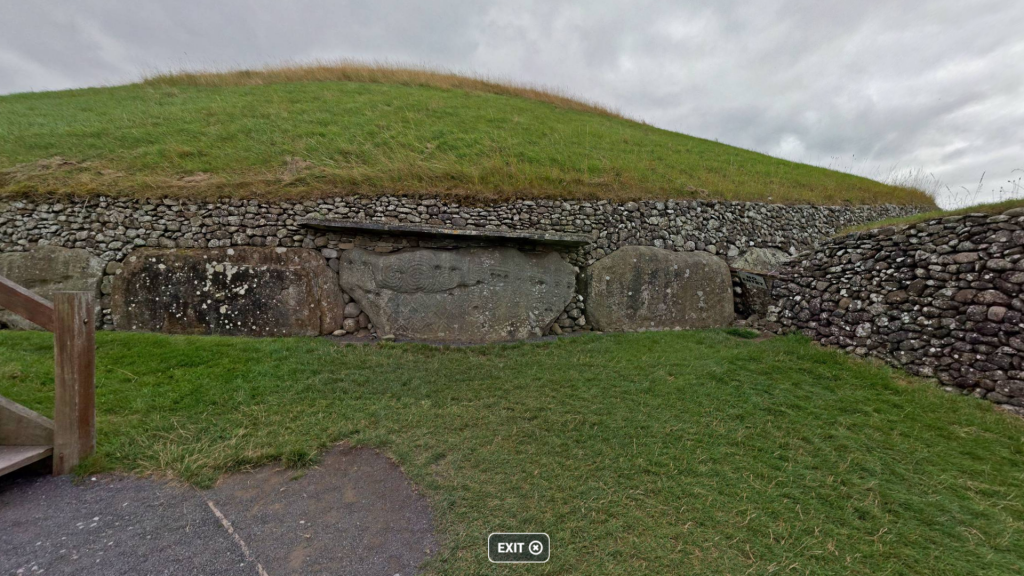While virtually perusing iconic Dublin sceneries, I couldn’t help but be fiercely attracted to the mystique of the Newgrange monument. More specifically, I was attracted to the controversy that surrounds its rebuilding and historical origins. Many people have become enamored with the site, and the secrets that it holds. It has been studied time and time again as a result of what I assume is an intrinsic need to recover what has been lost. I also believe that the later generations’ interactions with and fascination with the site is just as intriguing as its unknown origins.

When looking at the monument from afar, I first notice the wide grassy expanse around it, giving the place an air of significance; an ironic sense that it is untouchable, indestructible. When navigating around its outer parts, there are many stones placed around, with ancient writings carved upon them. In the decorum of the place, there is a felt emphasis on its history before post-neolithic meddling. Regardless of the accuracy of the building’s current state, there still remains a feeling of appreciation for its foundations. I couldn’t help but marvel at the melding of two times, two groups of people, the unknown and the searching.

All of this reminded me of Eavan Boland’s “That the Science of Cartography Is Limited.” In it, he speaks to cartography’s inability to accurately portray the entirety of a place’s being, from its history, to its beauty, to its impact on the people it surrounds. My thoughts glided through those of similar nature as I gazed at the Newgrange. It stands as a testimony to the emotions of the people, and their intense desire to hold fast to something hidden. The feelings of wonder cannot be communicated through physical things, and it is only through knowledge of the place’s history that full appreciation for its integration of the old and the new that the value of Newgrange can be felt.
